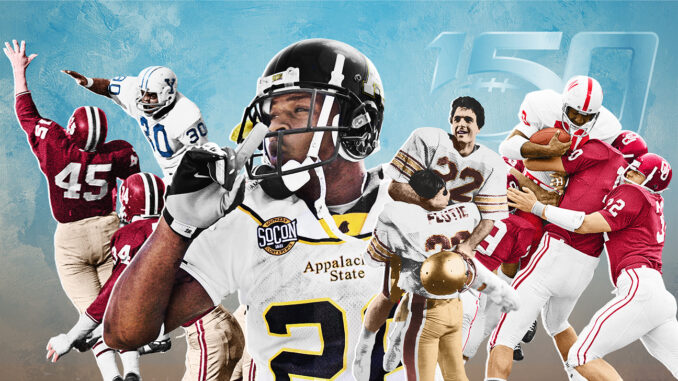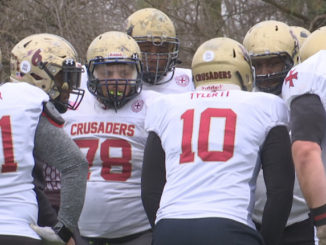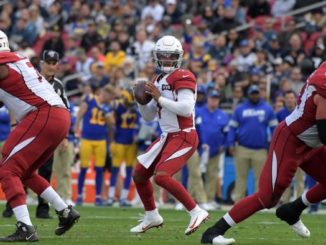
Miracle Football Plays- The Reverse is No Magic Bullet
Most of us think of reverse plays as ones where the flow moves to the outside in one direction then a handoff occurs to a wing, slot or end going in the opposite direction of the initial flow. These long developing reverse or end-around plays work well against poorly disciplined youth football teams. At the very youngest of ages like 6-7 where most of the teams and players are undisciplined, they often work against everyone. But the rule of thumb is the better coached the team you are playing is, the less likely the reverse will work. If your opponent has blazing speed and your team is slow, there is little chance that the reverse will be anything but a negative yardage play, as the defense has the speed to overcome an initial misstep.
In the last 6 seasons the teams that have played us and run reverse plays have had just one go for more than 10 yards and none went for touchdowns. I would guess 80% of the reverse plays run against my defense go for negative yardage. Our defense is designed to shut down sweeps and reverses and we only put our most patient and disciplined players at defensive end and of course we “fit and freeze” rep the heck out of reverses and bootlegs.
Before you call a reverse play in youth football, you must determine if the team you are playing is disciplined or not, if they are, the reverse is a terrible play call. You have to scout the defensive end and corner on the backside of your lead sweep plays to determine that. Why anyone would have bothered trying to run a reverse against us is beyond me, because if they had been watching those keys, they would have seen the play had no chance.
In Youth Football many of these reverse type plays are also run “naked”, they have no lead blockers and rely on all 11 defenders being fooled on the play in order for it to work. When just one player is not fooled, the play goes for negative yardage and if your ballcarrier fumbles in space behind the line of scrimmage there is the chance for a big play by the defense. The reverse plays in our playbook are very quick hitters, they are run very close to the line of scrimmage and have 3 lead blockers. We often average over 15 yards per carry with this play and rarely have negative yardage plays.
In order for this play to consistently work for us, we only have to fool 3-4 defenders as we pull linemen and have a lead running back blocking to gain numbers advantages at the point of attack. The flow looks like a sweep to the opposite side, the playside looks like a power play with 3 lead blockers. Back when I played youth football 100 years ago, we ran a wing reverse that we even trap blocked, it was a backbreaker. A trap scheme for reverses works well, but the worst designed and performing reverse plays are naked ones.
Many youth football coaches go to the reverse too early. The complementary play has to be set up and run a bunch to make sure the flow is going away from the reverse. In one memorable game a “Select” team ran the reverse 7 times against us. The first one was run on just the 3rd snap of the game, for negative yardage. Of the other 6, only one went for positive yardage and even that one went for a very small gain. My guess is this very successful youth football team was used to this play working and rather than checking their keys, they just figured it would work against any defense.
Another reason many reverse football plays go for negative yardage is the depth of the play from the handoff of the running back to the ballcarrier is often 5-6-7-8 yards deep and most use an outside handoff. When the reverse back has to run at an angle that is behind the player he is receiving the handoff from, he naturally has to bow deep to get the handoff and continues along that path deeper into the backfield before he can turn the play up. The deeper he gets, the more chance you have of a big negative yardage play. In Youth Football, we prefer an inside handoff on reverse plays to get the runner moving towards the line of scrimmage and keeping him shallow. This lowers the risk of the play and gets the runner upfield much quicker.
In Youth Football the reverse can be a very dangerous play for the defense, but when run incorrectly, too often, too deep, or naked, it can be a very dangerous play for the offense as well.
For more great youth football coaching tips and football plays, sign up for Dave’s free youth football coaching newsletter, please click here:
Football Plays [http://winningyouthfootball.com/author]
Copyright 2007 Cisar Management and http://winningyouthfootball.com republishing this article without including this paragraph is copyright infringement.
Unless otherwise stated, PONIREVO and/or its licensors DO NOT own any intellectual property rights in the website and material on the website. Majority of the site’s content has been scraped and auto posted by a third party artificial intelligence program —– PONIREVO Creation Team.
Proudly WWW.PONIREVO.COM
by Dave Cisar



